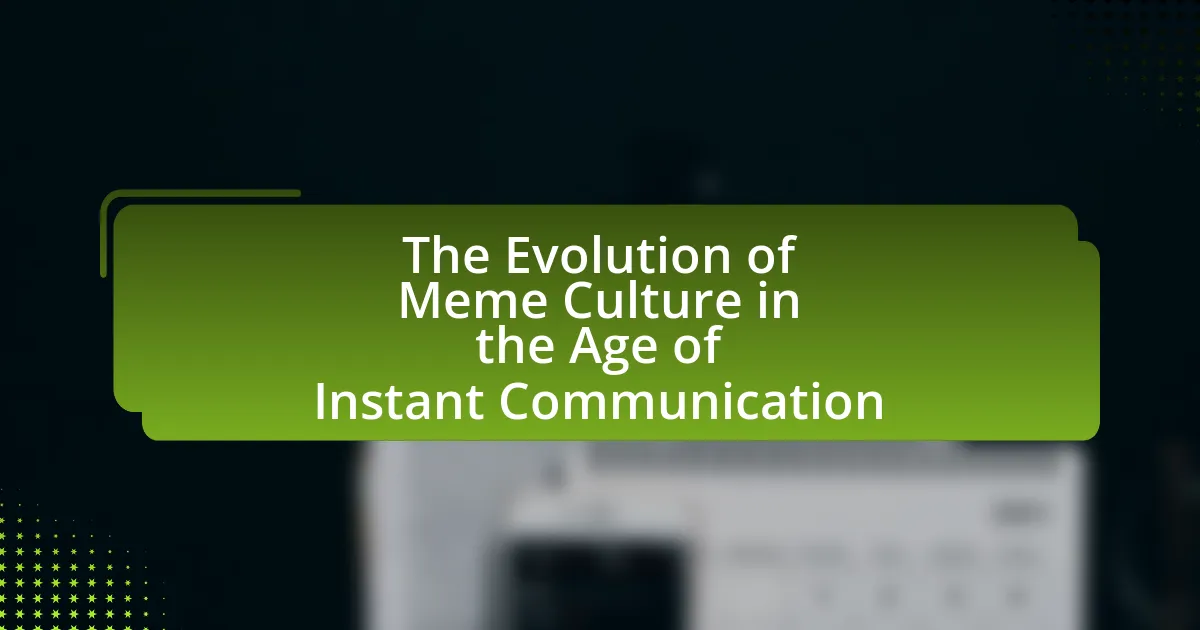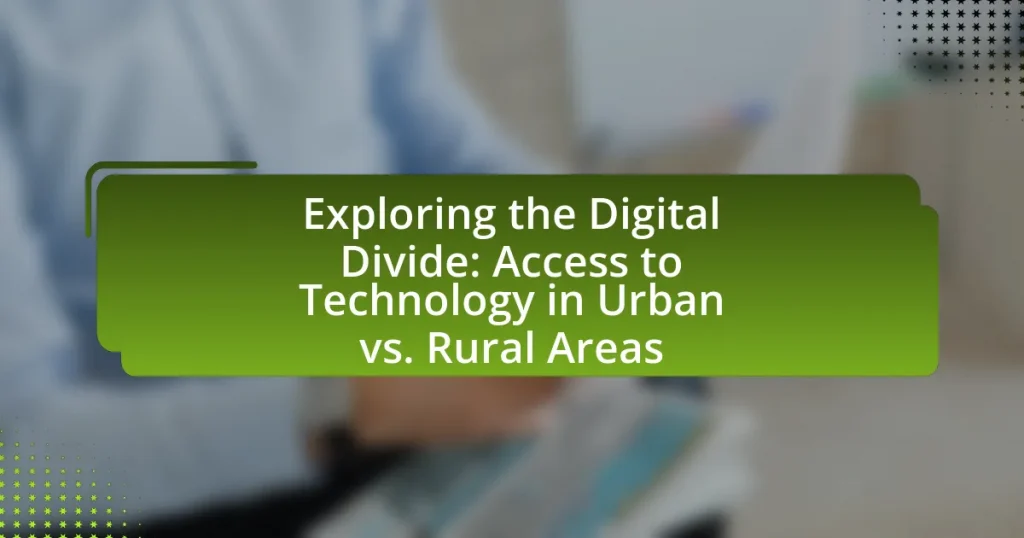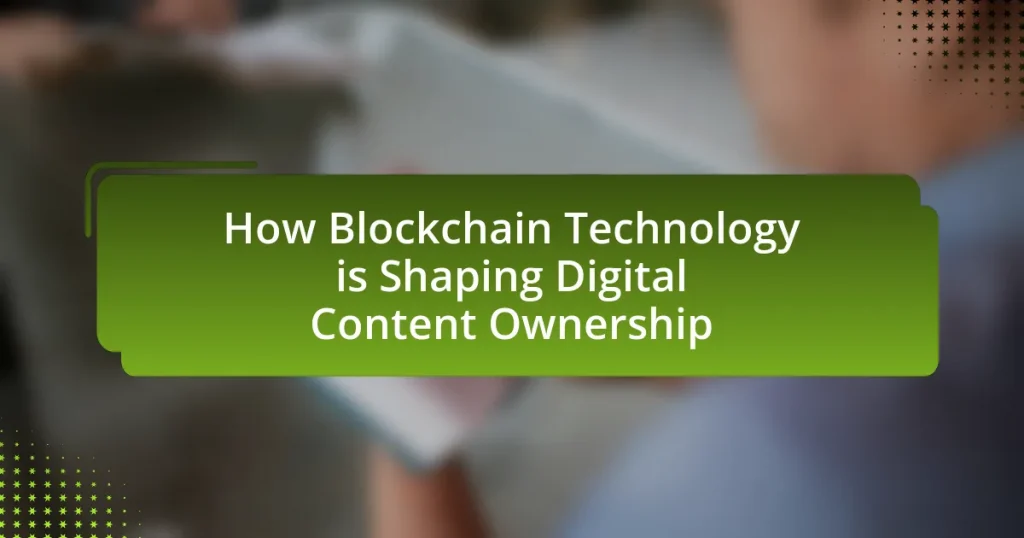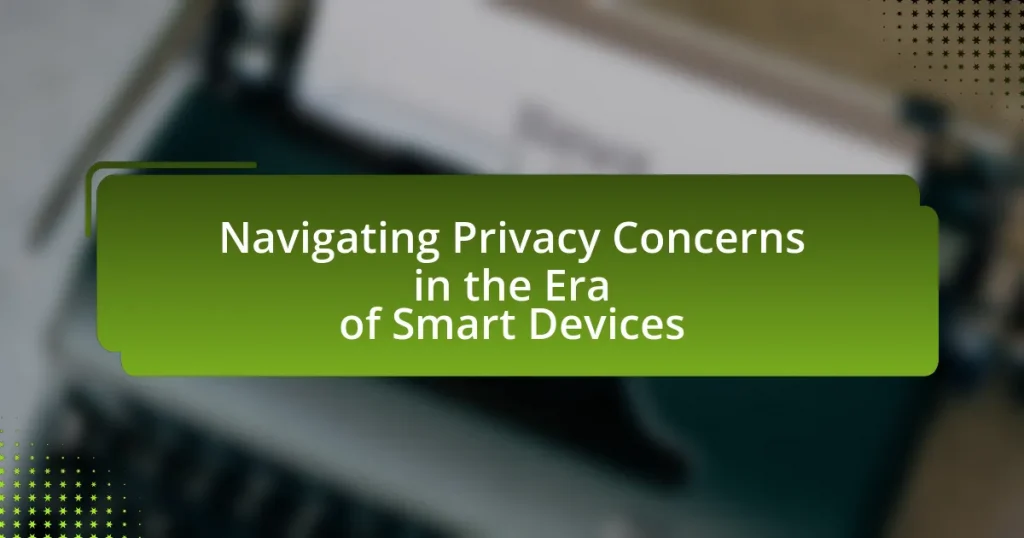The article examines the evolution of meme culture in the context of instant communication, highlighting how digital platforms have transformed the creation, dissemination, and adaptation of memes. It traces key milestones from the inception of the first internet meme to the rapid viral trends facilitated by social media and mobile technology. The discussion includes the significance of memes in contemporary discourse, their role in social interactions, and their impact on cultural commentary and social movements. Additionally, the article explores the characteristics of modern memes, the influence of algorithms on visibility, and strategies for individuals and brands to effectively engage with meme culture.
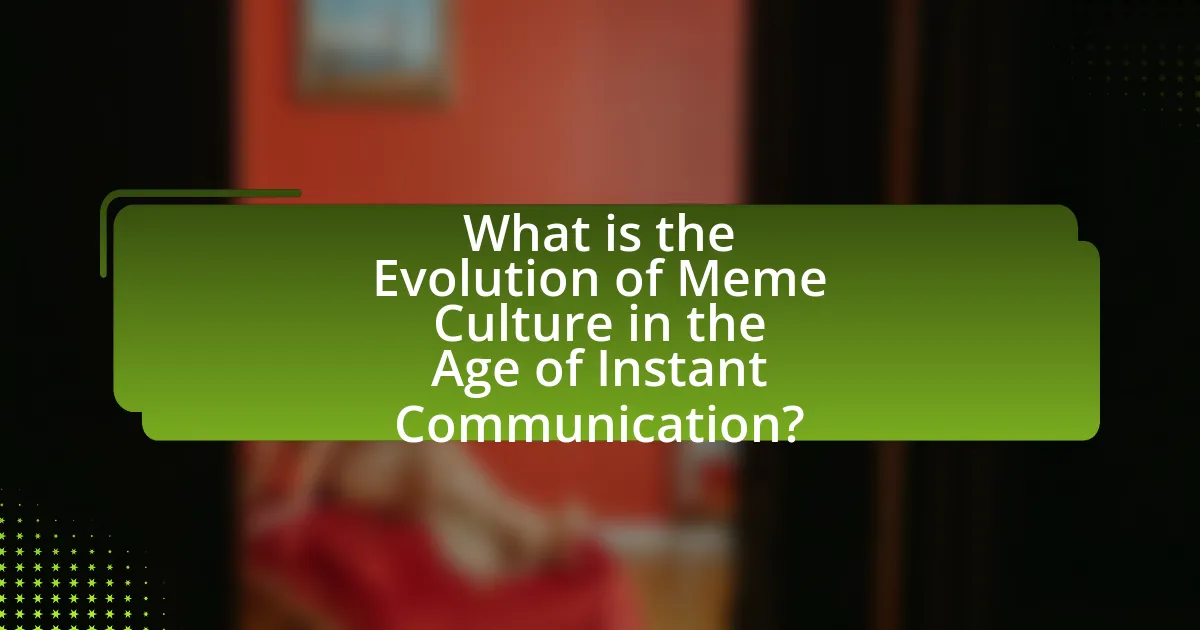
What is the Evolution of Meme Culture in the Age of Instant Communication?
The evolution of meme culture in the age of instant communication has transformed how ideas and humor spread rapidly across digital platforms. Initially, memes were simple images with text shared via email or early social media, but with the advent of platforms like Twitter, Facebook, and Instagram, memes became more dynamic and interactive. The speed of communication allowed for real-time sharing and remixing, leading to viral trends that can emerge and dissipate within hours. For example, the “Distracted Boyfriend” meme gained widespread popularity in 2017, illustrating how quickly a single image can be adapted to various contexts and humor styles. This rapid evolution is supported by the rise of mobile technology, which enables users to create and share content instantly, further embedding memes into everyday communication.
How has meme culture changed with the rise of instant communication?
Meme culture has evolved significantly with the rise of instant communication, leading to faster creation, dissemination, and adaptation of memes. Instant communication platforms, such as social media and messaging apps, enable users to share memes in real-time, resulting in a rapid cycle of trends and viral content. For instance, the average lifespan of a meme has decreased from weeks to days or even hours, as seen with the rise of platforms like Twitter and TikTok, where memes can gain millions of views within hours. This immediacy fosters a more participatory culture, where users actively remix and respond to memes, creating a dynamic and ever-changing landscape of humor and commentary.
What are the key milestones in the evolution of meme culture?
The key milestones in the evolution of meme culture include the creation of the first internet meme, the “Dancing Baby,” in 1996, which marked the beginning of meme sharing online. Following this, the rise of social media platforms in the early 2000s, such as MySpace and Facebook, facilitated the rapid spread of memes, allowing them to reach wider audiences. The introduction of image macros, particularly the “LOLcats” phenomenon in 2007, further popularized meme culture by combining images with humorous text. The emergence of platforms like Reddit and 4chan in the late 2000s provided dedicated spaces for meme creation and sharing, leading to the viral success of memes like “Rickrolling” in 2007. The proliferation of smartphones and apps like Instagram and TikTok in the 2010s transformed meme culture into a dynamic, multimedia experience, enabling users to create and share memes instantly. Each of these milestones significantly contributed to the development and mainstream acceptance of meme culture in the digital age.
How do technological advancements influence meme creation and sharing?
Technological advancements significantly enhance meme creation and sharing by providing accessible tools and platforms for users. The proliferation of smartphones and social media applications enables individuals to create, edit, and distribute memes rapidly, fostering a culture of instant communication. For instance, apps like TikTok and Instagram offer built-in editing features that simplify the process of meme generation, allowing users to combine images, text, and audio seamlessly. Additionally, the rise of high-speed internet facilitates the quick dissemination of memes across global networks, leading to viral trends. According to a study by the Pew Research Center, 55% of teens in the U.S. create or share memes, highlighting the impact of technology on user engagement in meme culture.
Why is meme culture significant in today’s digital landscape?
Meme culture is significant in today’s digital landscape because it serves as a powerful tool for communication and social commentary. Memes encapsulate complex ideas, emotions, and cultural references in a concise and relatable format, allowing for rapid dissemination and engagement across social media platforms. According to a study by the Pew Research Center, 55% of online adults in the U.S. have encountered memes, highlighting their widespread influence. Furthermore, memes often reflect and shape public opinion, acting as a barometer for societal trends and sentiments, which underscores their role in contemporary discourse.
What role do memes play in social interactions online?
Memes serve as a vital tool for social interactions online by facilitating communication, expressing emotions, and fostering community engagement. They allow users to convey complex ideas or sentiments quickly and humorously, often transcending language barriers. For instance, a study by Shifman (2014) in “Memes in Digital Culture” highlights how memes can create shared cultural references, enhancing social bonds among users. Additionally, memes often reflect current events or social issues, enabling users to engage in discussions and express opinions in a relatable format, thus reinforcing social connections.
How do memes contribute to cultural commentary and social movements?
Memes contribute to cultural commentary and social movements by serving as a rapid means of communication that encapsulates complex ideas and emotions in a digestible format. They allow individuals to express opinions, critique societal norms, and mobilize support for various causes, often using humor or satire to engage audiences. For instance, during the Black Lives Matter movement, memes highlighting police brutality and racial injustice spread widely on social media, raising awareness and fostering solidarity among diverse groups. This phenomenon illustrates how memes can effectively distill and amplify messages, making them powerful tools for cultural discourse and social activism.
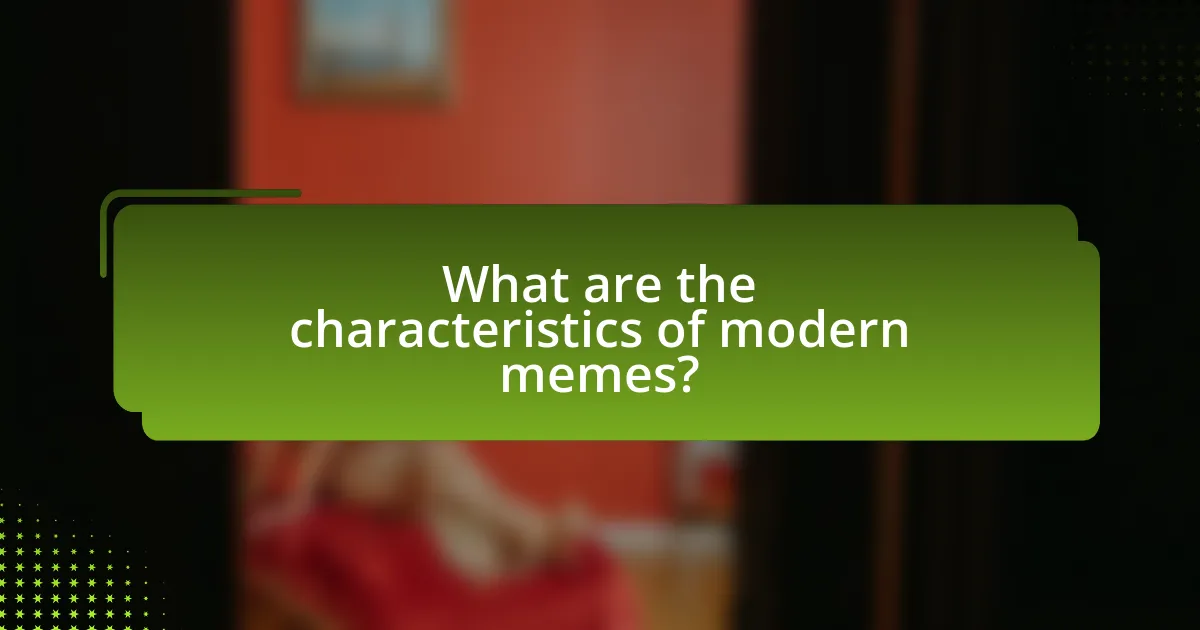
What are the characteristics of modern memes?
Modern memes are characterized by their rapid dissemination, relatability, and adaptability. They often utilize humor, irony, and cultural references to engage audiences, making them easily shareable across social media platforms. The format of modern memes frequently includes images or videos paired with text, allowing for quick comprehension and emotional resonance. Additionally, modern memes evolve quickly, reflecting current events and trends, which enhances their relevance and appeal. This adaptability is supported by platforms like Twitter and TikTok, where user-generated content can go viral within hours, demonstrating the dynamic nature of meme culture in the digital age.
How do memes differ from traditional forms of communication?
Memes differ from traditional forms of communication primarily in their reliance on visual and cultural shorthand to convey messages quickly and effectively. Unlike traditional communication, which often involves lengthy explanations or formal language, memes utilize images, humor, and cultural references to create immediate understanding among audiences. This method allows for rapid dissemination and adaptation across social media platforms, as evidenced by the viral nature of memes that can reach millions within hours, contrasting with the slower spread of traditional media such as newspapers or books.
What elements make a meme relatable and shareable?
Relatable and shareable memes typically contain humor, cultural references, and emotional resonance. Humor engages audiences, making them more likely to share content that elicits laughter. Cultural references connect with shared experiences or societal trends, enhancing relatability. Emotional resonance, such as nostalgia or empathy, fosters a deeper connection, prompting users to share the meme with others who may feel similarly. Research indicates that memes that evoke strong emotional responses are more likely to be shared, as demonstrated in a study by Berger and Milkman (2012) published in the journal “Psychological Science,” which found that content eliciting high arousal emotions, like awe or amusement, is more frequently shared.
How do humor and satire function within meme culture?
Humor and satire serve as essential mechanisms within meme culture by facilitating social commentary and fostering community engagement. Memes often utilize humor to simplify complex ideas, making them more accessible and relatable to a broad audience. For instance, satirical memes can critique societal norms or political issues, allowing users to express dissent or solidarity in a humorous format. This dual function not only entertains but also encourages discourse, as seen in the viral spread of memes during political events, where humor amplifies messages and mobilizes collective action. The effectiveness of humor and satire in memes is evidenced by their ability to resonate across diverse demographics, creating shared experiences and dialogues in the digital landscape.
What platforms are most influential in meme dissemination?
Social media platforms such as Instagram, Twitter, TikTok, and Reddit are the most influential in meme dissemination. These platforms facilitate rapid sharing and engagement, allowing memes to reach vast audiences quickly. For instance, TikTok’s algorithm promotes viral content, leading to widespread meme trends, while Reddit’s community-driven structure enables niche memes to gain traction within specific groups. Instagram’s visual focus enhances meme appeal, and Twitter’s character limit encourages concise, shareable humor. Collectively, these platforms shape the dynamics of meme culture by enabling instant communication and interaction among users.
How do social media platforms shape meme trends?
Social media platforms shape meme trends by facilitating rapid dissemination and engagement with content, allowing memes to evolve quickly based on user interactions. For instance, platforms like Twitter and TikTok enable users to share, remix, and respond to memes in real-time, which accelerates their popularity and adaptation. Research indicates that the viral nature of memes is significantly influenced by algorithms that prioritize trending content, as seen in studies analyzing engagement metrics on platforms such as Facebook and Instagram. These algorithms promote memes that generate high interaction rates, further shaping the trends by amplifying certain themes or formats over others.
What impact do algorithms have on meme visibility and virality?
Algorithms significantly influence meme visibility and virality by determining which content is prioritized and shown to users on social media platforms. These algorithms analyze user engagement metrics, such as likes, shares, and comments, to promote memes that are likely to resonate with a broader audience. For instance, Facebook’s algorithm favors content that generates high interaction rates, leading to increased exposure for popular memes. Additionally, platforms like TikTok utilize algorithms that recommend trending memes based on user behavior, further enhancing their virality. This mechanism creates a feedback loop where successful memes gain more visibility, leading to exponential growth in their reach and impact.

How do memes reflect societal changes and trends?
Memes reflect societal changes and trends by serving as a visual language that encapsulates collective sentiments, humor, and cultural references. They often emerge in response to current events, social movements, or shifts in public opinion, allowing individuals to express their views and emotions in a relatable format. For instance, during the COVID-19 pandemic, memes about quarantine life and social distancing proliferated, highlighting societal anxieties and coping mechanisms. This phenomenon illustrates how memes can act as a barometer for public sentiment, capturing the zeitgeist of a particular moment in time. Additionally, studies have shown that memes can influence political discourse, as seen in the 2016 U.S. presidential election, where memes played a significant role in shaping voter perceptions and engagement.
What themes are prevalent in contemporary memes?
Contemporary memes predominantly feature themes of humor, social commentary, relatability, and absurdity. Humor is often derived from irony and satire, allowing users to engage with current events or cultural phenomena in a lighthearted manner. Social commentary is prevalent as memes serve as a medium for discussing societal issues, politics, and cultural norms, often reflecting public sentiment. Relatability is a key theme, as memes frequently depict everyday experiences and emotions, fostering a sense of community among users. Absurdity is also significant, with many memes embracing nonsensical or surreal elements that challenge conventional logic, appealing to the internet’s penchant for the bizarre. These themes are supported by the rapid sharing and remixing capabilities of social media platforms, which amplify their reach and impact.
How do memes address current events and social issues?
Memes address current events and social issues by providing a rapid and accessible means of commentary and critique. They often distill complex topics into relatable visuals or phrases, allowing for quick dissemination and engagement across social media platforms. For instance, during significant events like the COVID-19 pandemic, memes emerged that highlighted public health messages, social distancing, and the emotional toll of lockdowns, effectively raising awareness and fostering community dialogue. Research indicates that memes can influence public perception and behavior, as seen in studies showing that humorous content can enhance the retention of serious messages, thereby shaping societal attitudes towards pressing issues.
What does the evolution of memes reveal about generational shifts?
The evolution of memes reveals significant generational shifts in communication styles, cultural references, and social values. As each generation adopts and adapts memes, they reflect their unique experiences and societal contexts; for instance, Millennials popularized image-based memes with text overlays, while Generation Z favors short, video-based formats like TikTok, emphasizing rapid consumption and creativity. This shift indicates a move towards more visual and interactive forms of communication, aligning with the digital landscape’s evolution. Furthermore, memes often address contemporary issues such as mental health and social justice, showcasing how generational values influence content creation and sharing. The transition from static images to dynamic videos illustrates a broader trend of increasing engagement and immediacy in communication among younger generations.
How can individuals and brands effectively engage with meme culture?
Individuals and brands can effectively engage with meme culture by creating relatable, shareable content that resonates with current trends and audience sentiments. This involves understanding the nuances of meme formats, humor, and the cultural context in which they thrive. For instance, brands like Wendy’s have successfully utilized memes by participating in online banter and responding to customer interactions with witty, meme-inspired replies, which has led to increased engagement and brand loyalty. Additionally, research indicates that 55% of consumers are more likely to engage with brands that use humor in their marketing, highlighting the effectiveness of memes in capturing attention and fostering connections.
What strategies can be employed to create relevant memes?
To create relevant memes, one effective strategy is to leverage current trends and cultural references that resonate with the target audience. This involves staying updated on popular events, social media trends, and viral content, which can enhance relatability and engagement. For instance, memes that incorporate trending hashtags or popular phrases often achieve higher visibility and sharing rates. Additionally, utilizing humor and irony can make memes more appealing, as studies show that humor increases the likelihood of content being shared. Furthermore, tailoring memes to specific demographics or communities ensures that the content speaks directly to the intended audience, increasing its relevance and impact.
How can brands leverage memes for marketing purposes?
Brands can leverage memes for marketing purposes by creating relatable and shareable content that resonates with their target audience. Memes often encapsulate humor and cultural references, making them highly engaging and likely to go viral. For instance, brands like Wendy’s and Netflix have successfully used memes to connect with younger demographics, increasing their social media engagement and brand visibility. According to a study by the Digital Marketing Institute, 60% of marketers reported that memes significantly boosted their audience engagement, demonstrating their effectiveness in modern marketing strategies.
What are the best practices for participating in meme culture?
To effectively participate in meme culture, individuals should prioritize originality, relevance, and engagement. Originality ensures that memes stand out and contribute uniquely to the conversation, while relevance connects the meme to current events or popular trends, enhancing its shareability. Engagement involves interacting with the community by sharing, commenting, and remixing existing memes, which fosters a collaborative environment.
Research indicates that memes that resonate with cultural moments or social issues tend to achieve higher virality, as seen in the widespread sharing of memes during significant events like elections or social movements. This demonstrates that aligning memes with timely topics increases their impact and reach.
